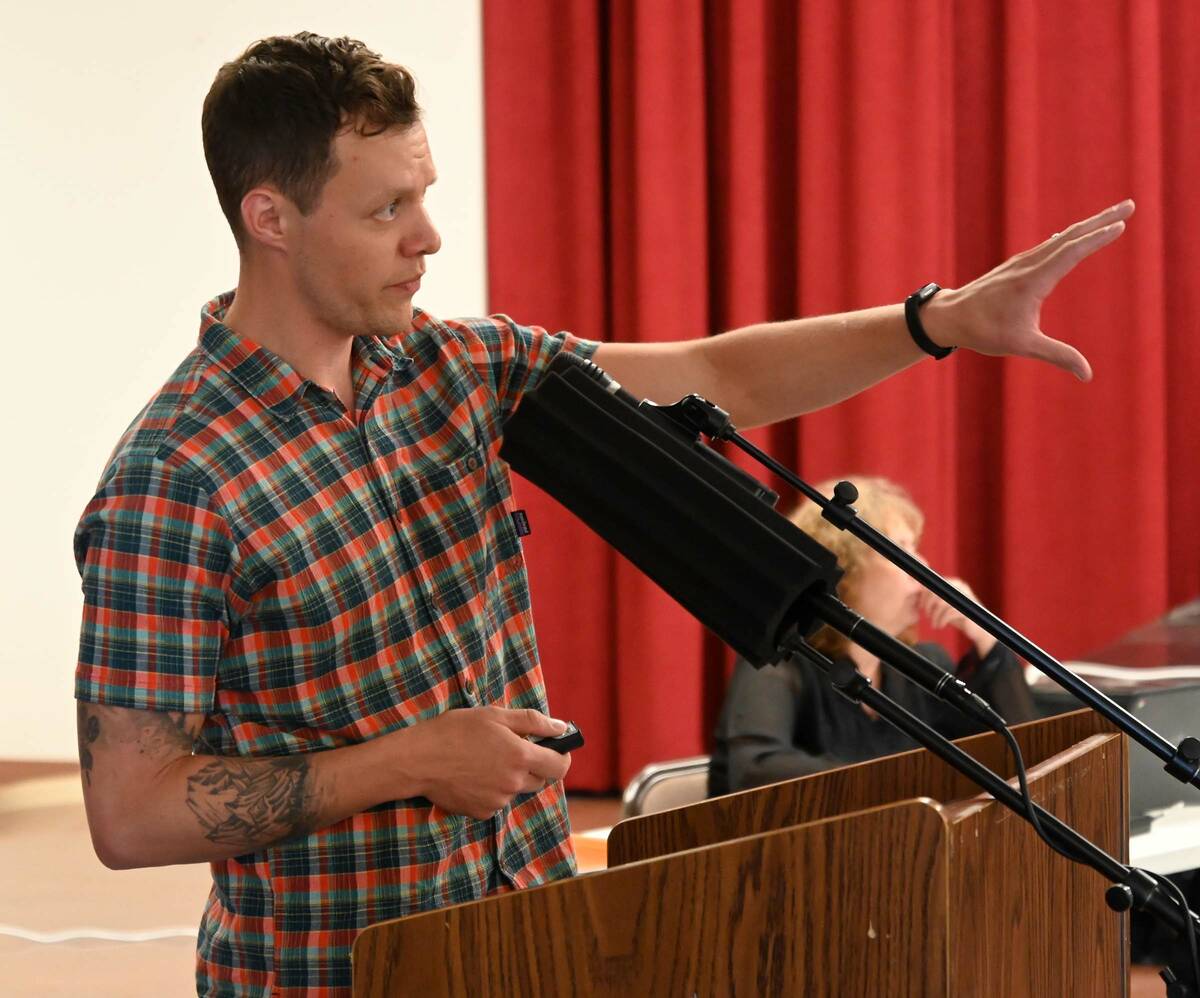Conservancy: Ash Meadows drilling could drain springs
Mason Viehl, executive director of the Amargosa Conservancy, described a potential threat to Ash Meadows National Wildlife Refuge and the Ash Meadows Area of Critical Environmental Concern to the Beatty Town Advisory Board on June 26.
Canada-based Rover Metals proposes drilling up to 30 boreholes 250-300 feet deep to explore for lithium in an area adjacent to the Wildlife Refuge and the ACEC. According to the Conservancy, several of these drilling sites are within a half mile of the Fairbanks and Rogers Springs in the refuge.
Drilling at that depth is expected to intersect groundwater, and Viehl fears it could create artificial springs that could drain water from — and potentially dry up — the natural springs that provide critical environment for species in the refuge and the ACEC, several of which are already listed as endangered or threatened.
“Ash Meadows is one of the most significant biodiversity sites in the United States or the world,” said Viehl.
He said that the regulations and laws for an exploratory project of this size are “not on our side.” The company is only required to post a $30,000 reclamation bond in order to start drilling. It is not required to submit a plan of operation, solicit public comment, or conduct and environmental analysis.
The Amargosa Conservancy would like the BLM to consult with the U.S. Fish and Wildlife Service regarding the potential impacts, require a plan of operations from the company, and conduct an environmental review of that plan.
Audience and board members commented that the company should be required to have materials on hand to immediately plug any holes that resulted in the creation of springs, and that there should be required monitoring, including long-term monitoring.
The BTAB voted to send a letter to the BLM expressing concern over the project.
The letter argued that allowing “this type of potentially destructive, water-intensive and invasive activity so close to a declared refuge and ACEC seems to contradict” the BLM’s mission “to sustain the health, diversity, and productivity of public lands for the use and enjoyment of present and future generations.”
The letter also served as an opportunity for the BTAB to again support the updating of the Nevada BLM resource management plan, saying that the existing RMP is out-dated in the face of “increasing demand on Nevada from industries that are environmentally impactful and public access limiting.”
Continuing its prolific letter-writing crusade, the board approved three other letters, the first of which expressed opposition to a proposed “Public Lands Conservation and Landscape Health Rule.”
After four pages of detail, the letter concludes, “In summary, we believe the Proposed Rule as written is a top down approach that devalues the NEPA process, fails to update our RMPs, alienates public discourse and stakeholder involvement which ultimately will continue to harm local economic land use and development. We see this as a way for the BLM to create a baseline that will impact stakeholders’ ability to review and update existing RMPs that would meet and address current land use designations and needs, including the identification of new ACECs.”
“We have common hopes, goals, dreams, and values, harmony with and respect of nature, physical and mental well-being, and a growing, healthy, sustainable economy. In Beatty our public lands play a key role in all facets of life, we want to protect, enjoy, and produce in harmony with them. This rule as written does not seem to move us forward, it may move us backward.”
The other two letters were to thank the BLM and Legacy Racing on the successful reclamation of the race course after Legacy’s last race. This was made possible by the enforcement of a bond by the BLM, and the work of many people, including volunteers who participated in monitoring pre- and post-event conditions.
As a side note to the meeting Nicole Altman reported that work on Anglo Gold Ashanti’s office complex in Beatty had been halted temporarily, and was expected to resume once the feasibility study for the North Bullfrog Project is approved by the corporation.
Richard Stephens is a freelance reporter living in Beatty.

















